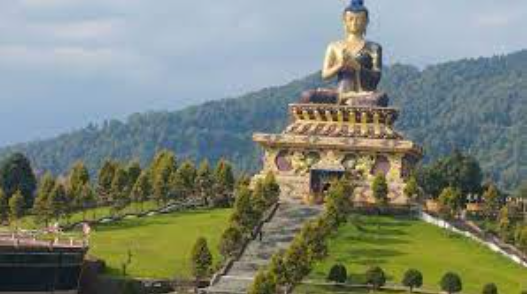Buddhist Pilgrimage Sites in India
India, the birthplace of Buddhism, is home to numerous pilgrimage sites that hold great significance for Buddhists worldwide. These sites are associated with the life and teachings of Gautama Buddha and attract millions of devotees each year. This article explores the major Buddhist pilgrimage sites in India, their historical and spiritual importance, and the impact they have on the Buddhist community.
The Four Main Sites
The four main Buddhist pilgrimage sites in India, as mentioned by the Buddha himself, are Lumbini, Bodh Gaya, Sarnath, and Kushinagar. These sites mark the key events in the life of the Buddha and are collectively known as the “Char Dham” of Buddhism.
Lumbini
Lumbini, located in present-day Nepal, is the birthplace of Siddhartha Gautama, who later became known as the Buddha. The Mayadevi Temple, which marks the spot where Queen Mayadevi gave birth to the Buddha, is the main attraction at Lumbini. The Ashokan Pillar, erected by Emperor Ashoka in 249 BCE, bears an inscription confirming Lumbini as the birthplace of the Buddha.
Bodh Gaya
Bodh Gaya, situated in the state of Bihar, is the place where the Buddha attained enlightenment under the Bodhi Tree. The Mahabodhi Temple, a UNESCO World Heritage Site, is the main attraction at Bodh Gaya. The temple complex houses the Bodhi Tree and the Vajrasana, the diamond throne upon which the Buddha sat during his enlightenment.
Sarnath
Sarnath, located near Varanasi in Uttar Pradesh, is the site where the Buddha delivered his first sermon after attaining enlightenment. The Dhamek Stupa, which marks the spot of the Buddha’s first sermon, and the Ashoka Pillar are the main attractions at Sarnath. The site also houses the Sarnath Museum, which contains numerous Buddhist artifacts and relics.
Kushinagar
Kushinagar, situated in Uttar Pradesh, is the place where the Buddha attained Mahaparinirvana, leaving his physical body behind. The Mahaparinirvana Temple, which houses a 6-meter-long statue of the reclining Buddha, is the main attraction at Kushinagar. The site also features the Ramabhar Stupa, which marks the spot where the Buddha was cremated.
Other Significant Sites
Apart from the four main sites, there are several other Buddhist pilgrimage sites in India that hold great significance for devotees.
Rajgir
Rajgir, located in Bihar, was the capital of the ancient kingdom of Magadha and a favorite retreat of the Buddha. The site is known for the Vulture Peak, where the Buddha delivered many important sermons, and the Saptaparni Cave, where the First Buddhist Council was held.
Nalanda
Nalanda, situated in Bihar, was once a renowned center of Buddhist learning. The Nalanda University, established in the 5th century CE, attracted scholars from all over Asia. The site features extensive ruins of the ancient university, including stupas, monasteries, and temples.
Sankissa
Sankissa, located in Uttar Pradesh, is believed to be the place where the Buddha descended from the Trayastrimsa Heaven after teaching his mother the Abhidhamma. The site features an Ashokan Pillar and the ruins of ancient monasteries.
Ajanta and Ellora Caves
The Ajanta and Ellora Caves, located in Maharashtra, are UNESCO World Heritage Sites renowned for their exquisite Buddhist cave art and architecture. The Ajanta Caves feature intricate paintings and sculptures depicting the life of the Buddha and the Jataka tales, while the Ellora Caves showcase the evolution of Buddhist cave architecture.
Pilgrimage Routes
Buddhist pilgrims often follow specific routes that connect the major pilgrimage sites in India. The most popular route is the Buddhist Circuit, which covers the four main sites of Lumbini, Bodh Gaya, Sarnath, and Kushinagar. The circuit also includes other significant sites such as Rajgir, Nalanda, and Sankissa.
Impact on the Buddhist Community
The Buddhist pilgrimage sites in India hold immense spiritual and cultural significance for the Buddhist community worldwide. These sites not only provide an opportunity for devotees to connect with the life and teachings of the Buddha but also serve as centers of Buddhist learning and practice.
Preservation and Development
Given the historical and spiritual importance of the Buddhist pilgrimage sites, the Indian government has taken several measures to preserve and develop these sites. The Ministry of Tourism has launched the “Swadesh Darshan” scheme, which aims to develop and promote the Buddhist Circuit as a tourist destination.
The government has also collaborated with international organizations such as UNESCO and the World Bank to undertake conservation and restoration projects at various Buddhist sites. These efforts have not only helped in preserving the rich cultural heritage of Buddhism in India but have also contributed to the economic development of the regions surrounding the pilgrimage sites.


